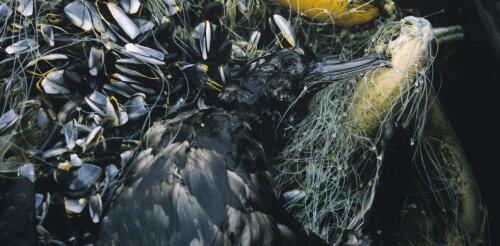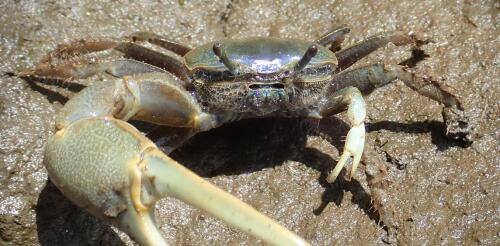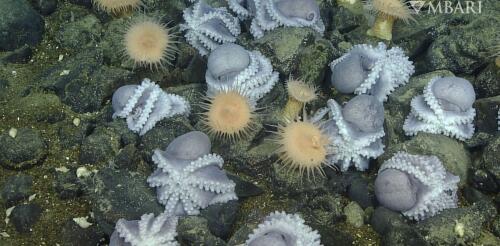Marine life
My colleagues and I mapped activity in the northeast Pacific of “dark” fishing vessels – boats that turn off their location devices or lose signal for technical reasons. In our new study, we found that highly mobile marine predators, such as sea lions, sharks and leatherback sea turtles, are significantly more threatened than previously thought because of large numbers of dark fishing vessels operating where these species live. While we couldn’t directly watch the activities of each of these dark vessels, new technological advances, including satellite data and machine learning, make it possible to estimate where they go when they are not broadcasting their locations. Examining five years of data from fishing vessel location devices and the habitats of 14 large marine species, including seabirds, sharks, turtles, sea lions and tunas, we found that our estimates of risk to these animals increased by nearly 25% when we accounted for the presence of dark v...
All of the saltwater bodies on Earth make up one big ocean. But within it, there is infinite variety – just ask any scuba diver. Some spots have more coral, more sea turtles, more fish, more life. “I’ve been diving in many places around the world, and there are few locations like the Fuvahmulah Atoll in the Maldives,” Amanda Batlle-Morera, a research assistant with the Important Shark and Ray Areas project, told me. “You can observe tiger sharks, thresher sharks, scalloped hammerheads, oceanic manta rays and more, without throwing out bait to attract them.” Identifying areas like Fuvahmulah that are especially important to certain species is a long-standing strategy for protecting threatened land animals, birds and marine mammals, such as whales and dolphins. Now our team of marine conservation scientists at the Important Shark and Ray Areas project is using it to help protect sharks and their relatives. I am a marine conservation biologis...
Nine years ago, I stood on the muddy banks of the Great Marsh, a salt marsh an hour north of Boston, and pulled a thumb-sized crab with an absurdly large claw out of a burrow. I was looking at a fiddler crab – a species that wasn’t supposed to be north of Cape Cod, let alone north of Boston. As it turned out, the marsh I was standing in would never be the same. I was witnessing climate change in action. The Great Marsh is on the Gulf of Maine, the piece of the Atlantic that extends approximately from Cape Cod, Massachusetts, to Nova Scotia, Canada. The marshes along the gulf are critical breeding sites for many bird species. But the water there is warming faster than almost anywhere else on the planet. And with warming water comes warm-water species. Marsh grass is essential for both habitat and adapting to sea-level rise in the Great Marsh. David S. Johnson Maryland blue crab and black...
PFAS, the “forever chemicals” that have been raising health concerns across the country, are not just a problem in drinking water. As these chemicals leach out of failing septic systems and landfills and wash off airport runways and farm fields, they can end up in streams that ultimately discharge into ocean ecosystems where fish, dolphins, manatees, sharks and other marine species live. We study the risks from these persistent pollutants in coastal environments as environmental analytical chemists at Florida International University’s Institute of the Environment. Because PFAS can enter the food chain and accumulate in marine plants and animals, including fish that humans eat, the spread of these chemicals has ecological and human health implications. Biscayne Bay and nearby coastal areas are teeming with fish, including many varieties that people eat. NPS image by Shaun Wolfe I...
Two miles below the ocean surface off Monterey, California, warm water percolates from the seafloor at the base of an underwater mountain. It’s a magical place, especially if you’re an octopus. In 2018, one of us, Amanda Kahn, was aboard the research vessel E/V Nautilus when scientists discovered the “Octopus Garden.” Thousands of pearl octopuses (Muusoctopus robustus) were curled up into individual balls in lines and clumps. As Nautilus Live streamed the expedition online, the world got to share the excitement of the discovery. We now know why these amazing creatures gather at this and other underwater warm springs. Scientists with the Monterey Bay Aquarium Research Institute take viewers on a journey to Davidson Seamount in a video narrated by Jim Barry, an author of this article. Credit: © MBARI. In a new study involving scientists from several fields, we explain why octopuses migrate to the Octopus Garden....




